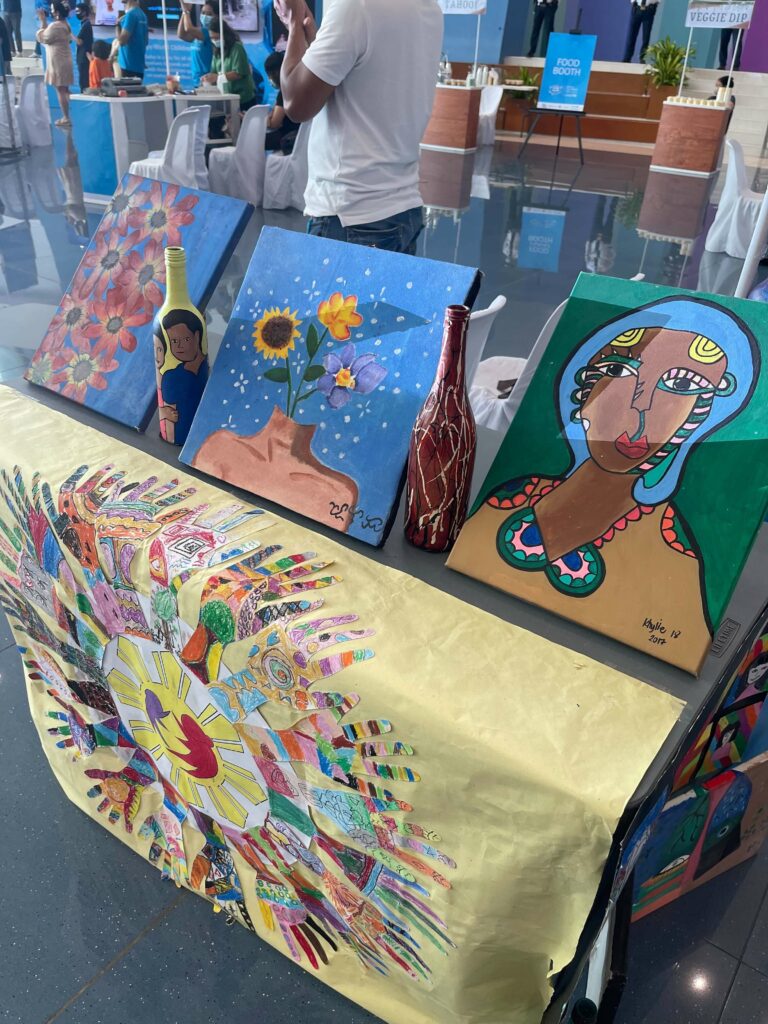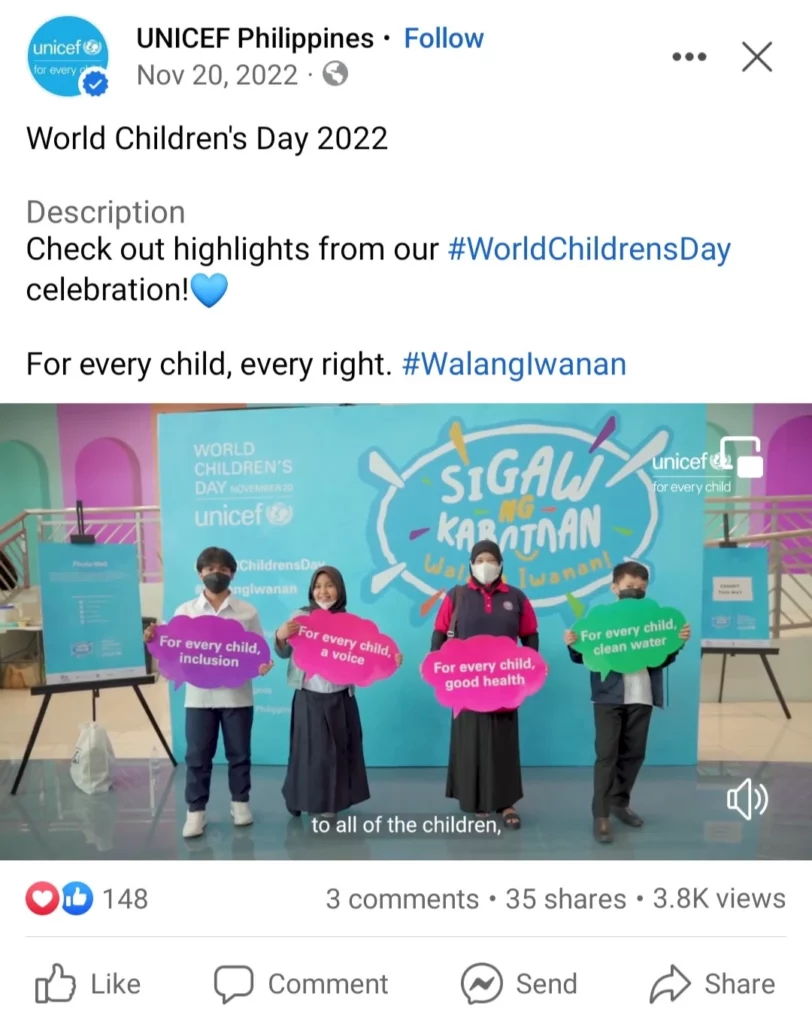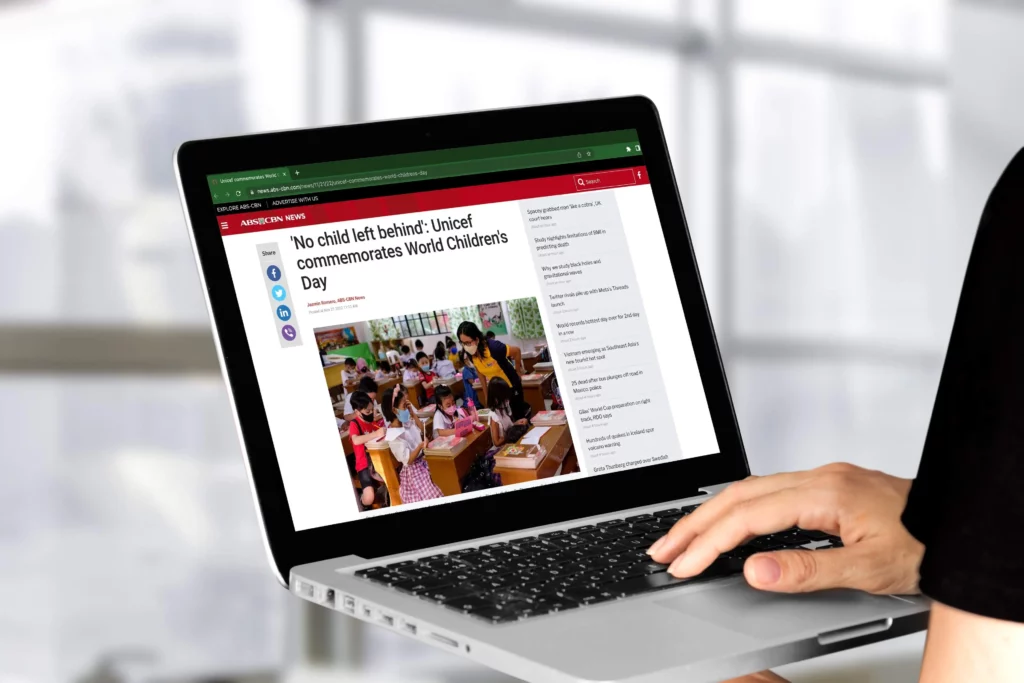Challenge
Every year, we celebrate World Children’s Day as a reminder to uphold children’s rights in line with the adoption of the Convention on the Rights of the Child. However, are these rights really followed, and do we really listen to the voices of the kids?
For World Children’s Day 2022, UNICEF Philippines set an avenue to have vulnerable children’s voices heard and provide a platform for them to tell their stories in their own language.
The event took place on November 20, 2022, two weeks after the start of full face-to-face classes for all students in the Philippines. Following two full years of online classes, UNICEF wanted to celebrate the shift back into physical interaction, face-to-face socialization, and access to school services that kids lost over the pandemic.
During the height of the lockdown, many kids had to deal with stress and anxiety with stringent opportunities for expression. UNICEF thought it was very important to celebrate World Children’s Day 2022 live.
Through storytelling, UNICEF Philippines championed the fundamental right of every child to form and freely express their views. Storytelling is a powerful tool for building children’s advocacy skills; to shed light on critical issues that impact lives. M2.0 Communications was brought in to provide PR and event management support to bring this vision to life.
Approach
The campaign needed to accomplish the following: empower children to tell compelling stories, mobilize the public to listen, and reinforce UNICEF’s role as a facilitator of meaningful engagements for the youth. In order to achieve these goals, World Children’s Day had to be greater than what it was previously.
To inspire creativity, UNICEF started the campaign by conducting workshops wherein young people from varying circumstances were paired with seasoned storytellers in various media – film, photography, and dance. The mentor-mentee pair developed their story concept based on the theme “Walang Iwanan” (Leave No One Behind) and shared their interpretation in the children’s medium of choice. UNICEF’s main role was to bridge the storytellers with the communities, to guide them on ethical filming and child-friendly storytelling, and to provide a venue to share their stories so that the public can hear their message.

Then, UNICEF held the Festival of Youth, a fun-filled event in partnership with the private sector, youth groups, government allies, and other networks. M2.0 developed the event theme and title: “Sigaw ng Kabataan” with the idea that as we are pushed to cope with the challenges that children face each day, we are reminded of the importance of reinforcing childhood’s basic enjoyments.
This is not about a return to the way things were. For millions of children around the world, ‘normal’ was never good to begin with. For World Children’s Day 2022, we aimed to reimagine a better present and future for them, as reflected in the voices of young people. For this World Children’s Day, we let children be children. We let them tell their stories. We let their voices be heard. We let them celebrate.
The finalized projects and performances of the participants were featured during the event. UNICEF goodwill ambassadors, Anne Curtis and Gary V, were invited to moderate panels with the youth as well as perform for the attendees. Government and implementing partners reaffirmed their commitment to children’s rights, while youth-led organizations set up activity booths for the young audience to enjoy.

To further show their support for World Children’s Day, UNICEF invited different LGUs and organizations for the “Go Blue” activation. They lit up their buildings, monuments, and landmarks with a blue color to help draw attention to children’s concerns and the most pressing issues they face.
Results
Thanks to the collaboration efforts, World Children’s Day 2022 was a success. It ended up garnering a significant media value of 27,501,258. This was a culmination of various media pick-ups, including CNN TV Coverage, ABS-CBN, Sun Star, and Manila Bulletin.



The event’s media coverage helped spread the message of World Children’s Day and the importance of protecting children’s rights. The media’s participation for the event was crucial in amplifying the voices of children and highlighting the various challenges they face.
The success of World Children’s Day: Sigaw ng Kabataan was not only measured by its media value, but also by the awareness it raised and the progress it made toward securing a better future for children around the world. With the people involved, it is clear that UNICEF reached its goal.


